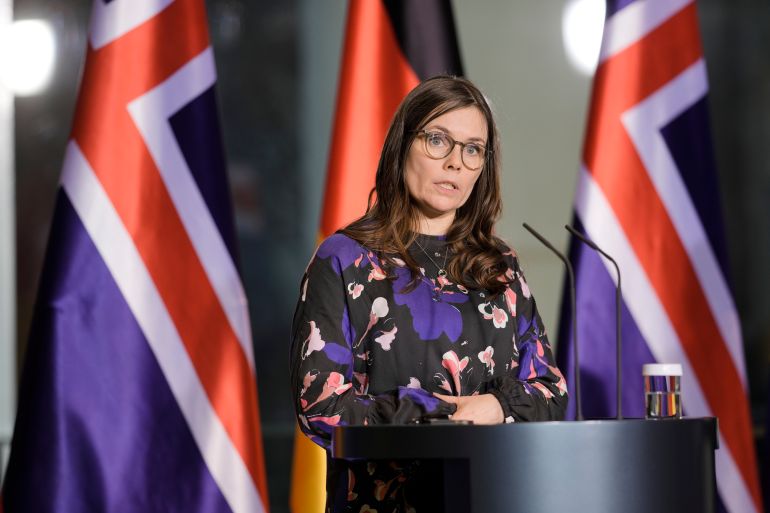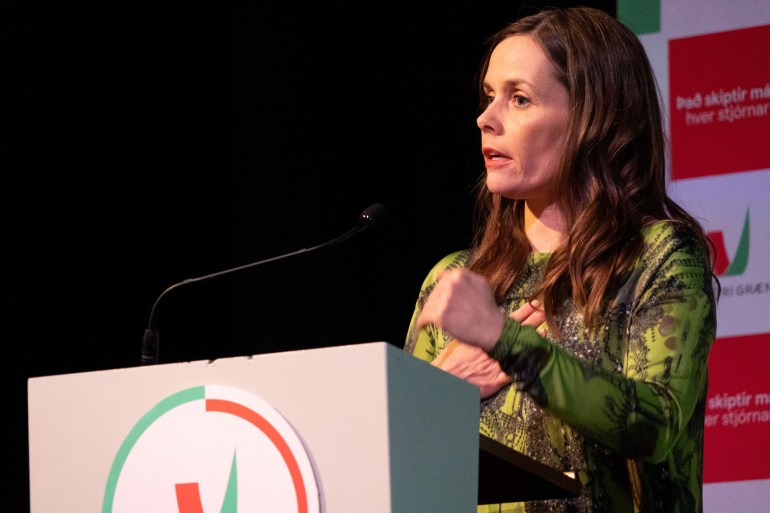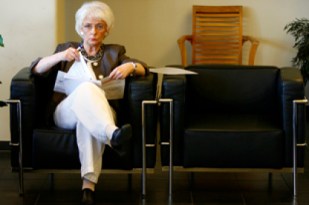Why are women in ‘feminist paradise’ Iceland striking?
While Iceland is viewed as a great place to be a woman, many feel there is still room for improvement.

Tens of thousands of Icelandic women, including the country’s female prime minister, are taking to the streets on Tuesday in a nationwide protest against gender inequality and sexual violence.
Billed as the biggest women’s strike in decades, the walkout will see women drop all paid and unpaid work – including domestic tasks – for the day, waving banners reading “Kallarou þetta jafnretti?” (“You call this equality?”).
Keep reading
list of 4 itemsThe changing face of Iceland’s politics
Iceland women tackle rape and ‘pornification’
Icelanders demand a say in EU membershipThis article will be opened in a new browser window
Iceland is widely considered to be a great place to be a woman, ranking number one in the World Economic Forum’s gender gap index for 14 years in a row.
The country is led by a woman – Prime Minister Katrín Jakobsdottir. Nearly half of its MPs are female. A high number hold managerial and executive positions. Parental leave conditions for mothers and fathers are so good that nearly 90 percent of working-age women have jobs.

So why do they feel the need to protest?
Why are women striking?
While Iceland is viewed as an equality paradise, many women feel there is still room for improvement.
Women still lag behind men in terms of earnings despite equal pay rules dating back to 1961. In 2018, lawmakers went further, obliging companies to prove they are not paying women less than men.
Yet inequality persists.
According to Statistics Iceland, the overall pay gap was 10.2 percent in 2021, widening to 29.7 percent in finance and insurance jobs. Women are also more likely to work in undervalued, lower-paid jobs, such as teaching or healthcare.
And toxic masculinity persists. More than 40 percent of women have experienced gender-based or sexual violence. A study by the University of Iceland in 2018 revealed that one in four women had been raped or sexually assaulted, with most reported cases failing to make it to trial.
“We’re seeking to bring attention to the fact that we’re called an equality paradise, but there are still gender disparities and urgent need for action,” said Freyja Steingrímsdottir, communications director for the Icelandic Federation for Public Workers, in an interview with Reuters.
Activists want the wages of women working in female-led sectors to be published. And they want perpetrators to be held to account for gender-based and sexual violence.
Who is striking?
At least 25,000 women and non-binary people are expected to turn up at a rally in Reykjavík city centre, with thousands of women in sectors like fishing, teaching and healthcare joining strikes around the country.
Prime Minister Jakobsdottir told local media that she would not be coming into work, urging her colleagues in cabinet to do the same. “First and foremost, I am showing solidarity with Icelandic women with this,” she told the mbl.is website.
Jakobsdottir, who has been in office since 2017, won plaudits for her steady leadership of the country during the pandemic. At the time, she attributed her success to her willingness to learn and to make mistakes, an ability that, she suggested, “comes easier to women than men”.
What led to this strike?
Today’s walkout is the biggest since 1975, when 90 percent of women refused to cook, clean or look after their children.
The event, which paralysed the country, saw factories and shops, schools and nurseries forced to close. It became known as the day the country ran out of sausages – faced with feeding their children, fathers resorted to the easiest food available.
The “Women’s Day Off” brought an enormous shift in the country’s mindset. Five years later, Iceland became the first country in the world to elect a female president. A divorced single mother, Vigdis Finnbogadottir would hold the job for 16 years.

By 2010, the country scored another first, electing Johanna Sigurdardottir as its first female prime minister, who also happened to be the world’s first openly gay head of government.
But the dozens of organisations behind today’s strike say that the demands of 1975 have still not been met.
While some might question the need for today’s action, Steingrimsdottir insisted that it was precisely because of Iceland’s global reputation that it had a responsibility to live up to expectations.